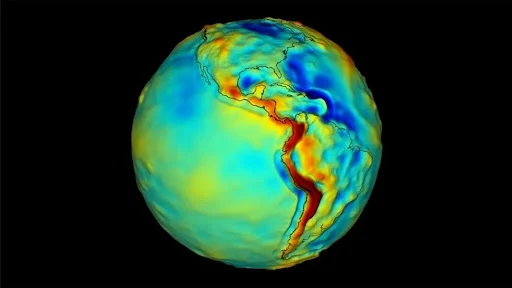NASA, in collaboration with private companies and academic institutions, is developing the Quantum Gravity Gradiometer Pathfinder (QGGPf), the first space-based quantum sensor designed to measure Earth's gravitational field with unprecedented precision. Supported by NASA’s Earth Science Technology Office (ESTO), the project is led by the Jet Propulsion Laboratory (JPL) and aims to detect subtle gravitational shifts caused by geological processes like moving water, tectonic activity, or shifting rock.
Here's a breakdown of this exciting project:
- Project Name: The mission is called the Quantum Gravity Gradiometer Pathfinder (QGGPf).
- Goal: To demonstrate and validate quantum sensing technology in space for precisely mapping tiny variations in Earth's gravitational field from orbit.
- Technology:
- The sensor uses atom interferometry.
- It employs two clouds of ultra-cold rubidium atoms cooled to near absolute zero (temperatures colder than naturally occurring anywhere in the universe).
- At these temperatures, the atoms exhibit wave-like quantum properties. Lasers are used to split and recombine these atom "waves".
- By measuring the minute differences in how gravity accelerates these two spatially separated atom clouds as they free-fall, the instrument can detect subtle gravitational anomalies or gradients.
- This technique leverages the consistency and stability of atoms as test masses, making them less susceptible to environmental noise compared to traditional mechanical sensors.
- Development Team: The project is led by NASA's Jet Propulsion Laboratory (JPL) and supported by NASA's Earth Science Technology Office (ESTO). Key partners include quantum technology companies like AOSense and Infleqtion (working on the sensor hardware) and Vector Atomic (working with NASA's Goddard Space Flight Center on the precision laser systems), along with academic collaborators.
- Advantages:
- Sensitivity: Quantum sensors like QGGPf are estimated to be potentially up to ten times more sensitive than current classical gravity-measuring instruments in space.
- Compactness: The instrument is designed to be relatively small (about 0.25-0.3 cubic meters, roughly the size of a small washing machine) and lightweight (around 125 kg or 275 lbs), allowing it to operate on a single spacecraft. This contrasts with missions like GRACE-FO which require multiple satellites.
- Accuracy & Stability: Using atoms as test masses ensures measurements are consistent and less prone to drift over time.
- Applications: Precise gravity measurements from space have numerous applications:
- Mapping underground resources like aquifers (freshwater reserves), oil deposits, and mineral concentrations.
- Monitoring dynamic Earth processes like the movement of water, melting ice sheets, and tectonic plate shifts.
- Improving navigation systems.
- National security applications (e.g., potentially detecting subsurface structures).
- Planetary science (studying the composition and internal structure of other planets and moons).
- Fundamental physics research (potentially probing phenomena like dark matter or dark energy).
- Timeline: The QGGPf mission is primarily a technology validation or "pathfinder" mission. It is scheduled for launch and an in-space test near the end of this decade (around 2029-2030).
- Relation to Cold Atom Lab (CAL): This project builds upon the experience gained with NASA's Cold Atom Lab currently operating on the International Space Station (ISS). CAL has successfully created ultra-cold atoms (Bose-Einstein Condensates) in space and demonstrated atom interferometry for measuring forces like gravity and station vibrations, proving the feasibility of such sensitive quantum experiments in orbit. QGGPf represents the next step: a dedicated, optimized instrument for high-precision gravity gradient measurements from its own spacecraft.
In summary, NASA's QGGPf project is a pioneering effort to leverage quantum mechanics for highly sensitive Earth observation, potentially revolutionizing our ability to understand subsurface features and dynamic processes on our planet and beyond.

